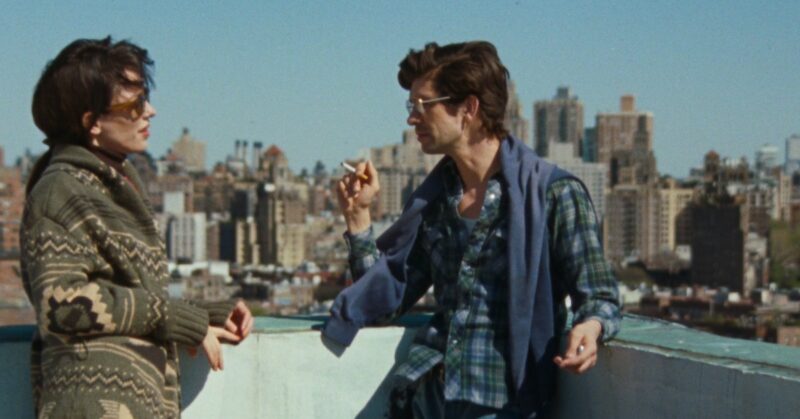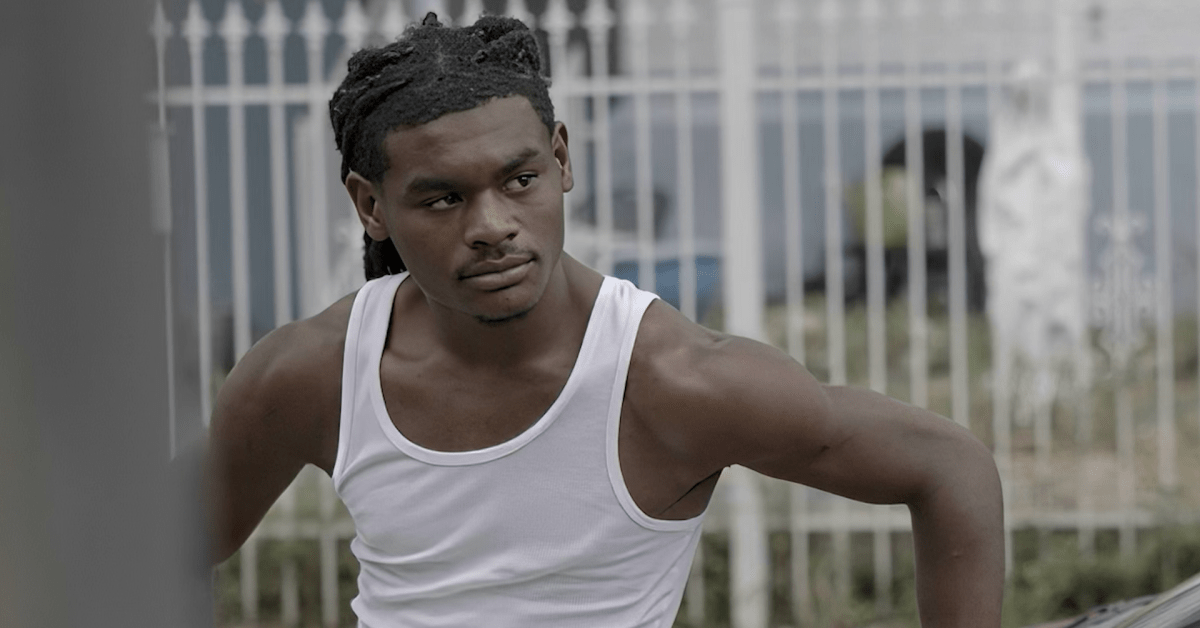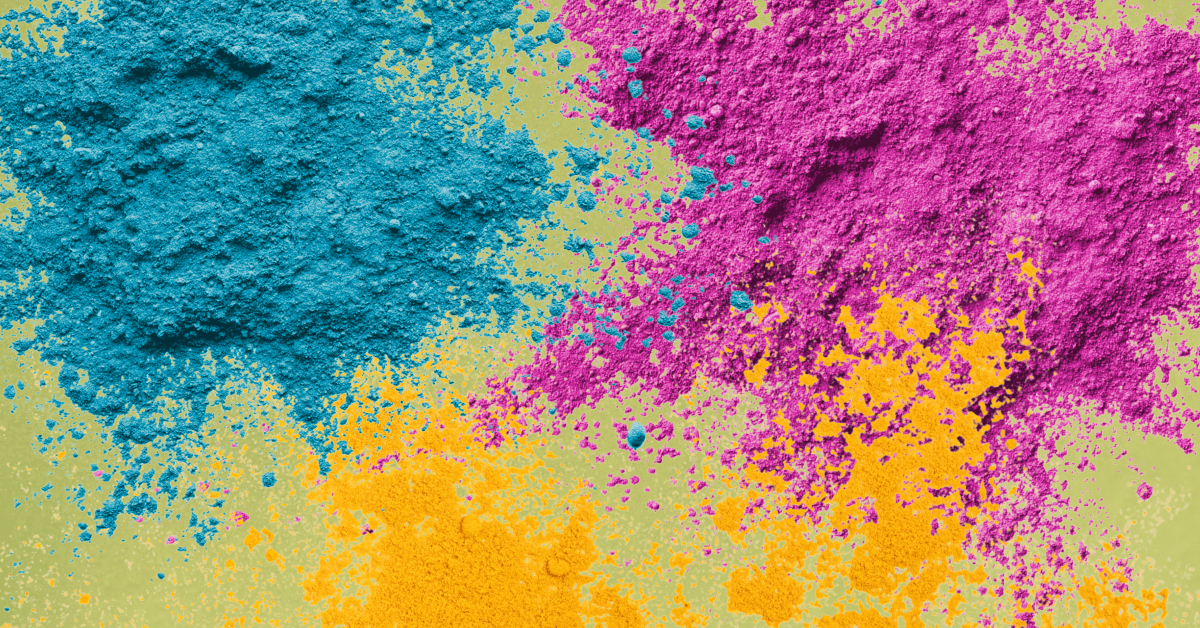
On Dec. 19, 1974, the writer Linda Rosenkrantz recorded her friend, the esteemed photographer Peter Hujar, recounting everything he did the prior day while it was fresh in his mind.
The author of Talk, about friends conversing in the Hamptons, she planned to turn her conversation with Hujar into a book about how notable people spend their days.
[time-brightcove not-tgx=”true”]
The book didn’t happen, but the conversation did get published in 2021 as Peter Hujar’s Day, and now there’s a film adaptation by the same name, out in theaters Nov. 7, directed by Ira Sachs and starring Ben Whishaw as Hujar and Rebecca Hall as Rosenkrantz. Using the transcript as dialogue, the film shows Hujar and Rosenkrantz lounging and talking in her Manhattan apartment, cooking and having a smoke on the roof.
The real Rosenkrantz thinks her friend, who died of AIDS complications in 1987, would be quite pleased with this new level of fame, as Hujar always knew his work was worthy. “I think he had an inkling that he was going to become famous at some point,” she says in a phone conversation. “I think he would be surprised at the extent to which he’s become famous—but not really surprised.”
Here’s what to know about the photographer and the movie’s reflection on being an artist in New York in the 1970s.
Who was Peter Hujar?

Hujar is considered one of the great black-and-white photographers of the 1970s and 1980s. Inspired by the work of Richard Avedon and Diane Arbus, he’d go on to influence a generation of photographers that included Robert Mapplethorpe and Nan Goldin. Most of Hujar’s portfolio focused on the queer scene in New York City and the bohemian art scene in downtown Manhattan. He covered the seminal period in the LGBTQ+ movement from the Stonewall uprising in 1969 to the AIDS crisis that started in the 1980s.
Hujar also socialized with the big names in the city’s intelligentsia, including pop artist Andy Warhol and writer Susan Sontag, whom he called close friends. His only book, Portraits in Life and Death (1976), juxtaposed photos of people in his circle and with images of ancient corpses in the Palermo catacombs.
Hujar died of AIDS-related complications in 1987 at the age of 53.
How Peter Hujar’s Day became a movie
In the late 2010s, Rosenkrantz, then in her mid-80s, stumbled upon a typewritten document of the conversation that she had with Hujar about what he did on Dec. 18, 1974.
She donated it to the Morgan Library & Museum in New York City, which houses Hujar’s papers, prints, and contact sheets. The Morgan had put Hujar’s work on display in 2018, sparking new interest in his work, and in 2021, Rosenkrantz’s typewritten document was published as “Peter Hujar’s Day” nearly half a century after their conversation.
Director Ira Sachs came across the book at Les Mots à la Bouche, a queer bookstore in Paris, while he was filming Passages (2023). According to the New York Times, he asked the film’s co-star Ben Whishaw—who owns a 1980 self-portrait of Hujar sitting naked in a chair—if he would be up for making it into a movie.
What to know about Peter Hujar’s Day (2025)
There isn’t a typical storytelling structure, especially not one for a Hollywood feature. There is no climactic moment, no breaking news, no new revelations. It’s simply a photographer telling his friend what he did on a particular day. The film is just Rosenkrantz and Hujar talking for 76 minutes, no other major characters.
In the film, Rosenkrantz says she likes hearing about how people fill up their days because “I myself feel like I don’t do much of anything all day.” Hujar feels the same way, saying, “I often have the feeling in my day that nothing much happens. I wasted another day.”
Late-risers will appreciate that Hujar stayed in bed that day until 11:45 a.m. on Dec. 18, 1974. But it’s not like he wasn’t active; he did 27 pushups and photographed Beat poet Allen Ginsberg for the New York Times. He found Ginsberg “very unpleasant,” and as a result, Hujar didn’t think the photos came out well. “We didn’t connect,” he sighs. He muses the pictures would have come out better if Ginsberg was attracted to him. At one point, his friend, curator Vince Aletti, asked if he could come over and take a shower, and he even brought his own shampoo and hair dryer. Hujar name-drops big names in the literati throughout the film, like Fran Lebowitz, so the film also serves as a who’s who in the New York City creative scene of the time.
Creatives will be able to relate to Hujar’s process, like when he says, “To do good work, I have to have the time to really look at it, really see what I’m doing. Sometimes I just stand and stare at it, and it’s even rather pleasurable. It really takes time to get to know it.” Smoking is part of that process too, and he’s trying to quit, but failing. When Rosenkrantz says his smoking “upsets” her and points out that the energy he spends smoking could be used in other ways, he agrees, admitting, “I don’t feel good” and that he feels like he has “smoker’s hangover all day long.”
Not everything that the characters are doing in the movie is exactly what they were doing in 1974. The fact that Sachs was just working off of a typewritten transcript and not a video recording of the interaction leaves any filmmaker with room to imagine what the characters were doing while they were talking. Rosenkrantz notes that she was not lying in bed and chatting with Hujar at any point, nor did they start dancing in the middle of the conversation, as the movie depicts.
That said, they enjoyed dancing at nightclubs and going ice skating together. “I would feel his feelings move through me,” Rosenkrantz once wrote in her journal about her close friendship with Hujar. “Are we having fun yet?” was one of his signature phrases, and she hopes viewers will learn something about maintaining intimate friendships.
“These are real people who loved each other, a gay man and a straight woman,” Rosenkrantz says. “To me, what stands out in the film is the sense of intimacy.” At a time when many relationships take place over social media, she notes that the art scene in the 1970s felt like “a much smaller world at the time,” and hopes that 2025 viewers will make the effort to forge and maintain their own intimate friendships.








